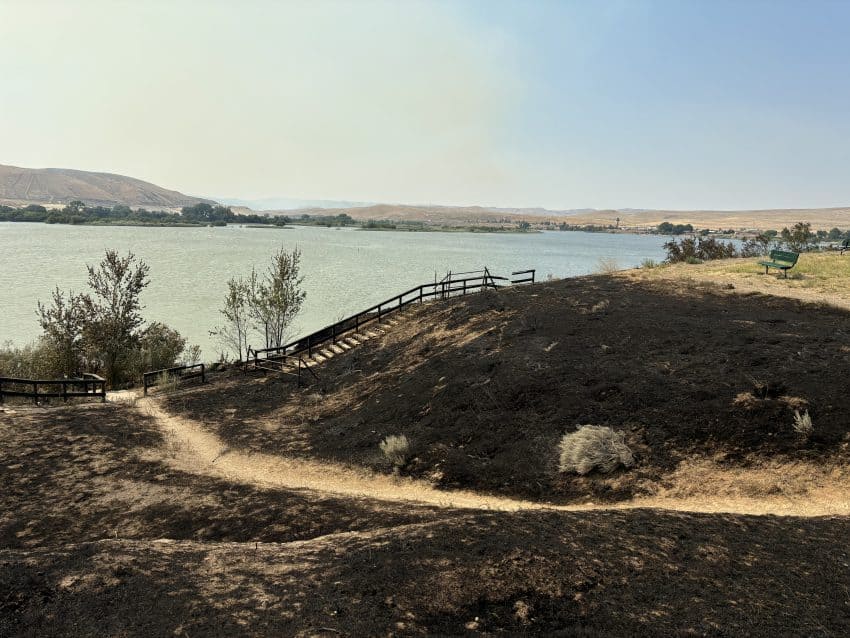(SALEM, Oregon – July 23, 2024) — Oregon Parks and Recreation Department (OPRD) temporarily banned campfires at most Oregon State Parks due to dry conditions and the strain on firefighting resources from wildfires burning across the state.
Campfires and open flames are banned at all parks east of the Cascades due to the low humidity and risk of wildfires. They’re also restricted at parks in high-risk areas across the state until conditions improve. Most bans impact parks east of the Cascades and in the valley with some restrictions at select coastal parks.
“We understand that campfires are an important part of the experience at Oregon State Parks. We don’t make the decision lightly to restrict the use of fire, but unfortunately conditions require that response. The decision is made in consultation with our local fire agencies. Thank you for helping us do our part to reduce the risk of any new wildfires,” said JR Collier, OPRD’s deputy of statewide operations.
Campfire restrictions generally ban all “open flame,” but often make exceptions for propane cooking as the flame is contained. Check individual park webpages for details on any restrictions before visiting. Restrictions are listed in alphabetical order in a feature story at stateparks.oregon.gov/ or on the individual park pages.
OPRD also encourages visitors to know before they go when it comes to the impact of wildfires across the state:
- Several parks have been closed due to wildfires including Battle Mountain Forest State Scenic Corridor, Farewell Bend State Recreation Area (above photo), East and West Hatfield Trailheads on the Columbia River Highway State Trail and Ukiah-Dale Forest State Scenic Corridor. Check park webpages at stateparks.oregon.gov/ and search by park.
- Some parks have reduced air quality due to wildfire smoke. Check DEQ’s website for air quality information at www.oregonsmoke.org/
- Several roads and highways have been closed due to wildfires. Please use TripCheck to learn about closures and alternative routes. Relying on GPS might lead drivers into unsafe conditions
Six tips for a safe and enjoyable campfire when and where permitted:
- Maintain campfire flames at knee height (about 2 feet high). A smaller flame helps prevent ash and embers from rising into the trees or dry vegetation. If you see the wind stirring up embers, play it safe and put the fire out.
- Only build campfires in the existing fire ring in your campsite. Fire rings are placed in areas with buffer zones and away from vegetation.
- Always keep plenty of water on hand to safely put out the campfire. Douse the flames with water and stir the embers to make sure everything is wet. The stirring step is important: ash and wood debris often maintain heat.
- Beach campfires should be on open sand and away from driftwood or vegetation. Slowly pour water on your beach fire to put it out. Pouring water too quickly can cause hot sand to fly. Don’t use sand to put out a beach fire. Covering the fire with sand will insulate the coals, keeping them hot enough to burn someone hours or even days later.
- For propane fire rings, follow the same safety precautions you would with a log-based campfire. The use of propane fire rings may vary depending on local conditions.
- Make sure everyone in your campsite is familiar with campfire safety, including children. Always keep an eye on your campfire; many accidental fires are started because campers left their fire unattended for “just a minute.”
For more information about current wildfires around the state, go to the Oregon Department of Forestry’s website: https://www.oregon.gov/odf/fire/pages/firestats.aspx.
For more information about wildfire prevention, please visit the Oregon State Fire Marshal’s webpage at https://www.oregon.gov/osfm/education/pages/prevent-wildfires.aspx.


